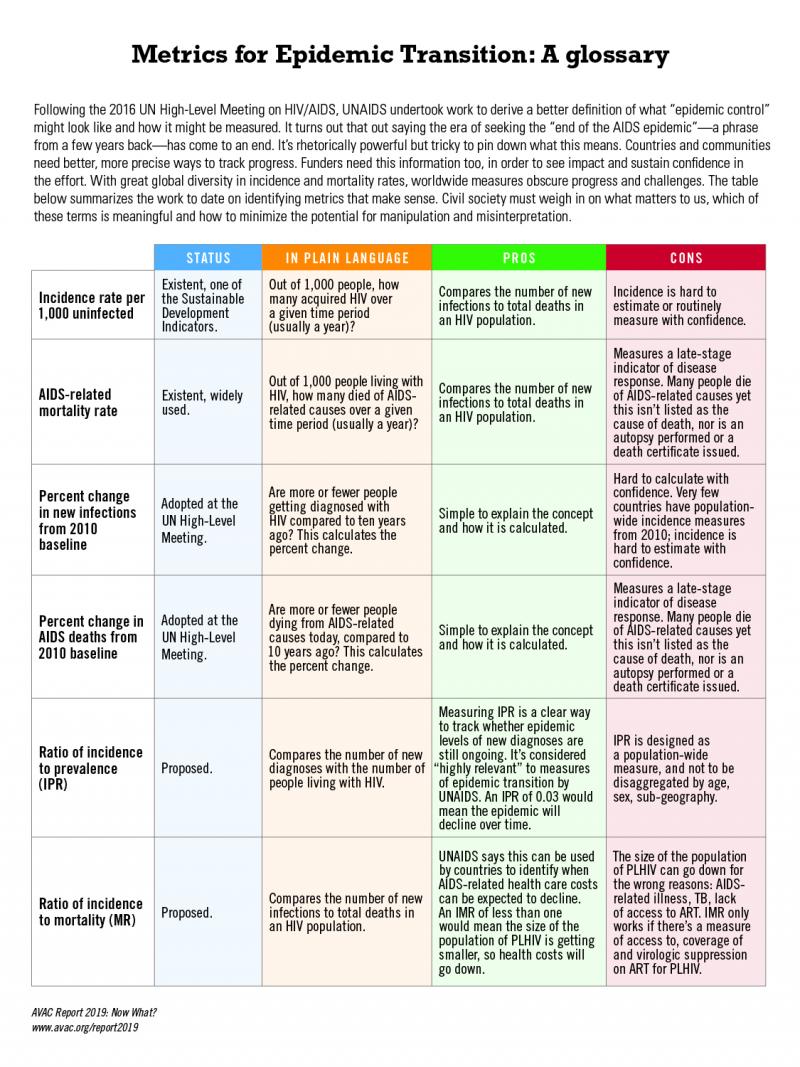- About UsOur Story, Our Team & Support Information
- What We DoAdvocacy to Achieve the End of AIDS
- Advance HIV/SRH Integration
- Advocate for Access to High-Impact Prevention
- Improve Research Conduct
- Product Innovation & Availability
- Promote Effective HIV Prevention Policy
- Strengthen Global Advocacy Networks
- Track and Translate the Field
- Our FocusInterventions to End the Epidemic
- ResourcesPublications, Infographics, Events & More
- MediaInformation & Resources for the Press
- Our BlogPrevention News & Perspective
Thursday, November 21, 2019
General
Following the 2016 UN High-Level Meeting on HIV/AIDS, UNAIDS undertook work to derive a better definition of what “epidemic control” might look like and how it might be measured. It turns out that out saying the era of seeking the “end of the AIDS epidemic”—a phrase from a few years back—has come to an end. It’s rhetorically powerful but tricky to pin down what this means. Countries and communities need better, more precise ways to track progress. Funders need this information too, in order to see impact and sustain confidence in the effort. With great global diversity in incidence and mortality rates, worldwide measures obscure progress and challenges.
This table summarizes the work to date on identifying metrics that make sense for tracking the epidemic. Civil society must weigh in on what matters to us, which of these terms is meaningful and how to minimize the potential for manipulation and misinterpretation.
Excerpted from AVAC Report 2019: Now What?

